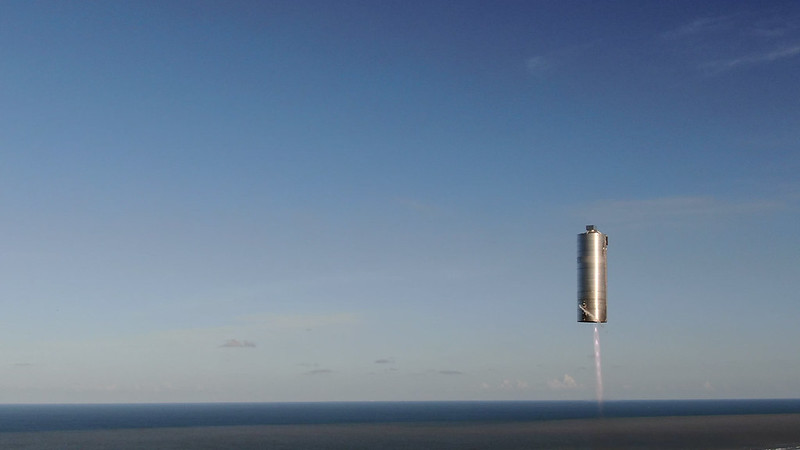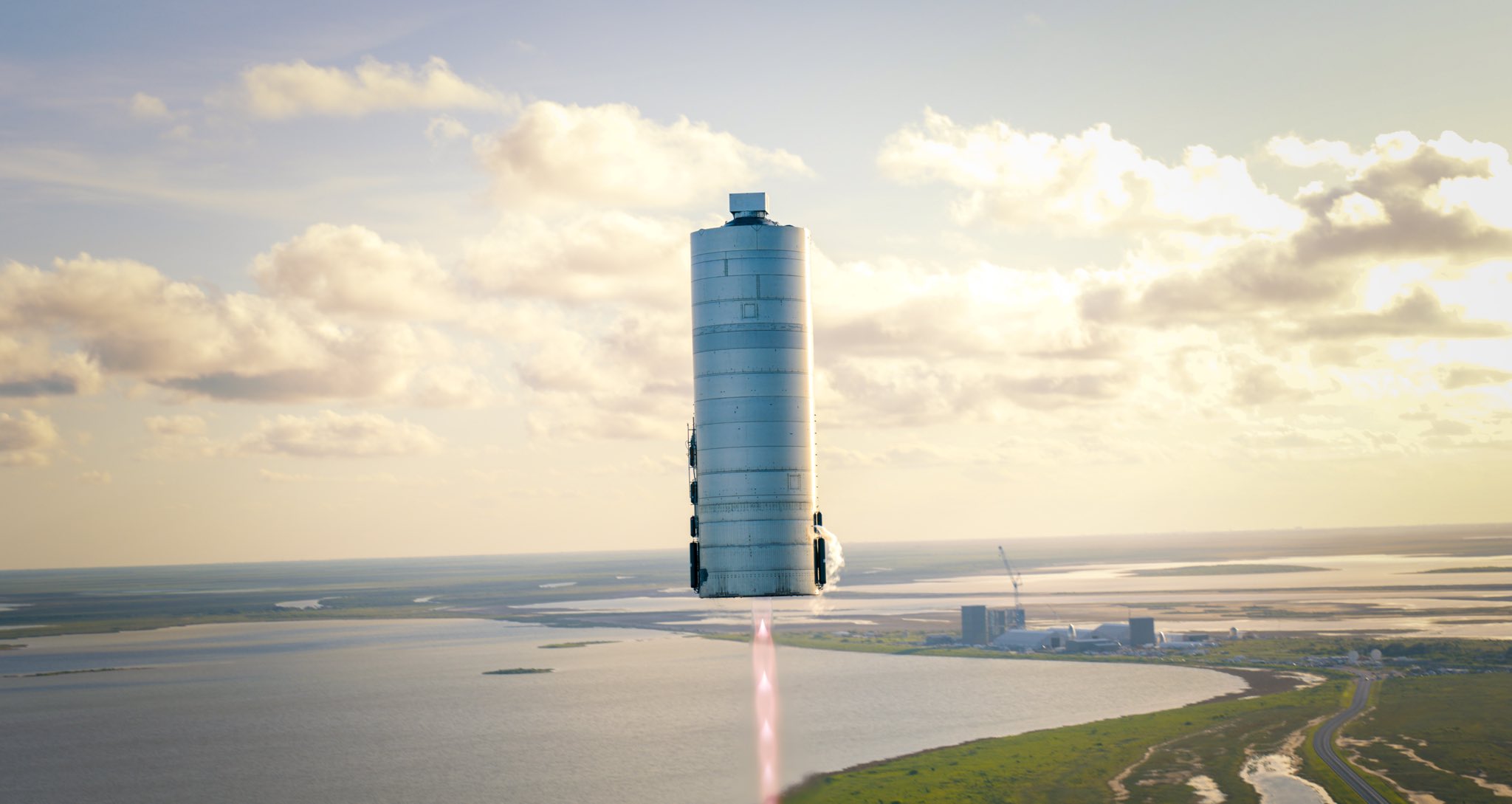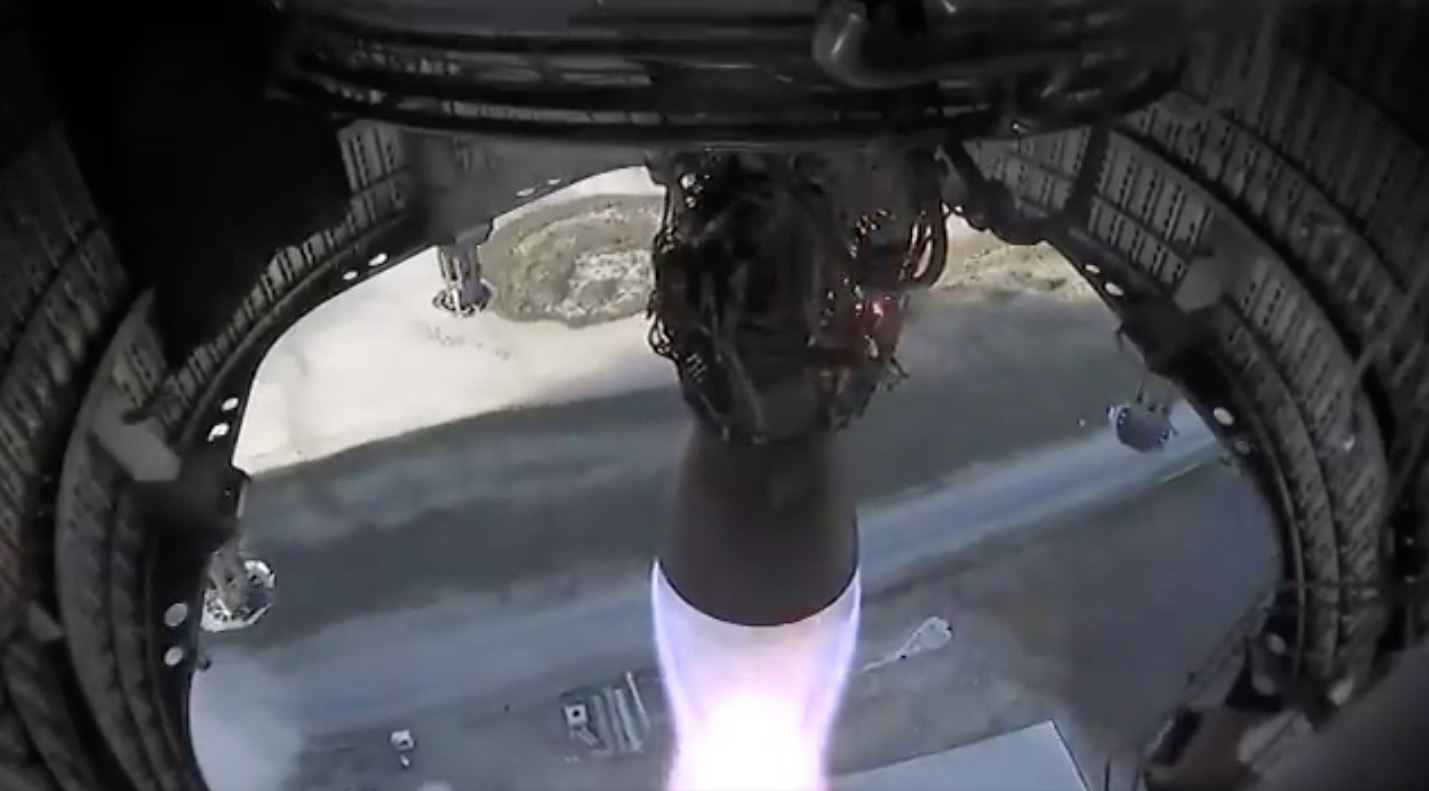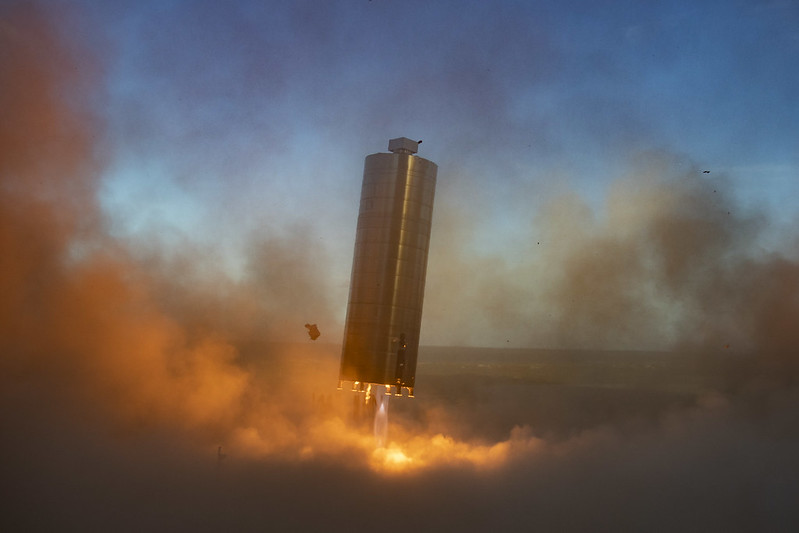In photos: SpaceX's SN5 Starship prototype soars on 1st test flight
On Aug. 4, 2020, SpaceX's SN5 Starship prototype took a short, uncrewed hop that could end up leading to humanity's next giant leap.
SN5 flew about 500 feet (150 meters) above SpaceX's South Texas facilities, near the village of Boca Chica. It was the first-ever test flight for a full-size prototype of the company's Mars-colonizing Starship spacecraft. (The first flights overall for the Starship development line were made in 2019 by a small, stubby craft dubbed Starhopper.)
See some of the best photos of the landmark flight below.
Liftoff!

Not just up and down

500 feet high

Beauty shot

Coming down

Landing legs deployed

Touchdown

Breaking space news, the latest updates on rocket launches, skywatching events and more!

Michael Wall is a Senior Space Writer with Space.com and joined the team in 2010. He primarily covers exoplanets, spaceflight and military space, but has been known to dabble in the space art beat. His book about the search for alien life, "Out There," was published on Nov. 13, 2018. Before becoming a science writer, Michael worked as a herpetologist and wildlife biologist. He has a Ph.D. in evolutionary biology from the University of Sydney, Australia, a bachelor's degree from the University of Arizona, and a graduate certificate in science writing from the University of California, Santa Cruz. To find out what his latest project is, you can follow Michael on Twitter.
